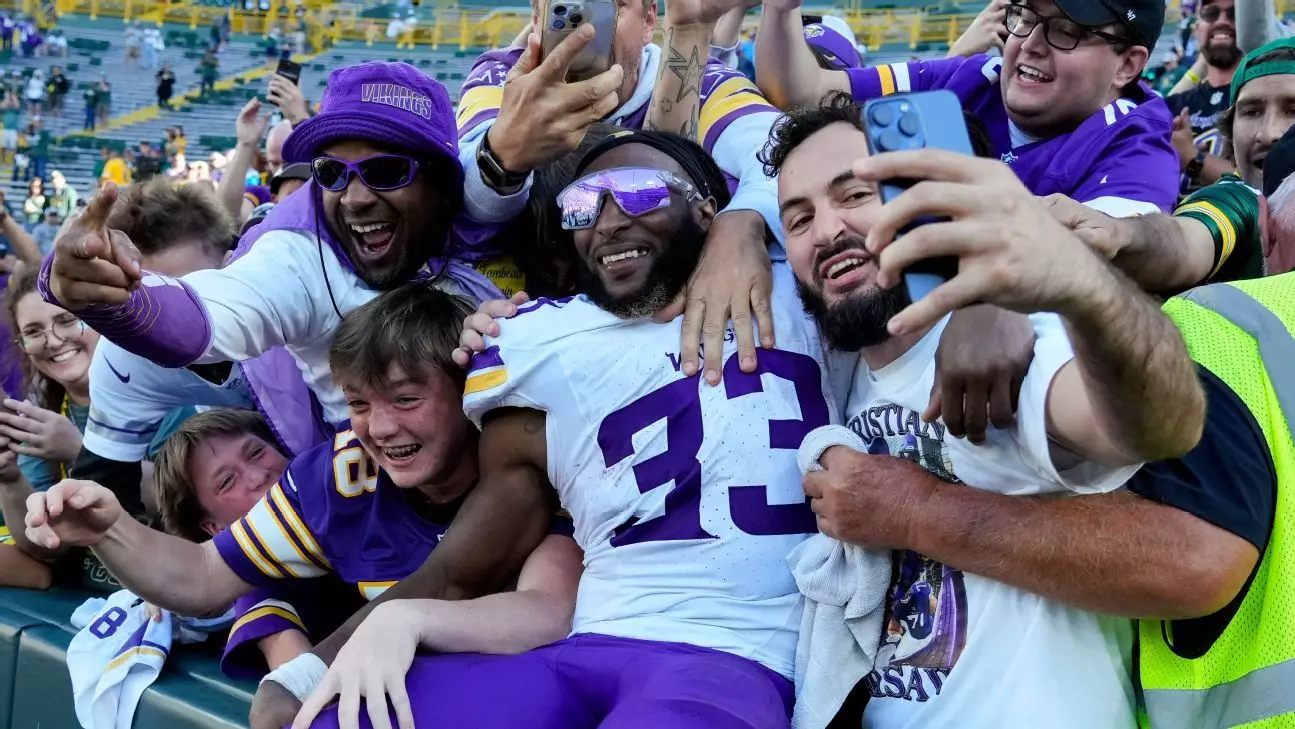As the Minnesota Vikings eye their backfield options ahead of the impending 2025 season, a clear narrative emerges—this organization seeks a more sustainable and balanced approach to their running game. Recently, head coach Kevin O’Connell’s comments have hinted at a desire to amend the heavy reliance on veteran running back Aaron Jones, whose performance last season, despite his physical injuries, has raised both eyebrows and expectations.
In 2024, Jones, stepping in as the featured back, faced a demanding role that resulted in record-setting figures, including a staggering 1,138 rushing yards on 306 touches. His unique ability to perform even under the strain of injuries is commendable and highlights his endurance and skill as a seasoned running back. Yet, the physical toll taken on Jones raises critical questions about the sustainability of such an approach. At 30, he stands at a precarious intersection of experience and age, compelling the franchise to rethink their strategy for the upcoming seasons.
O’Connell acknowledged Jones’ significant contributions to the team, indicating that a continuation of the status quo would be unwise. “For the better part of his career, he had kind of been a part of backfield committees,” O’Connell reflected, suggesting that the Vikings could benefit from diversifying their running back strategy rather than centralizing it around one player. This perspective signals potential changes regarding how the team engages their backfield—a shift that could mitigate the risk these wear-and-tear situations present.
The Vikings’ rushing metrics tell a revealing story. Historically reliant on a passing game featuring star receiver Justin Jefferson, the team ranked 29th in designed runs in the preceding two seasons. O’Connell’s directive to create better equilibrium within the offense is telling; he intended for the running game to play an essential role as the Vikings transition to a more balanced attack. The statistics suggest that the committee approach, which historically served Jones well in his early career, is the direction they may be gravitating towards anew.
The 2024 season showcased an interesting dynamic, as Ty Chandler briefly surfaced as a supplemental ball-carrier. However, Chandler’s subsequent struggles and the acquisition of Cam Akers revealed an underlying urgency to stabilize the second running back spot. When looking at these shifts in player utilization, one can surmise that the labyrinth of the Vikings’ backfield is far from settled, leaving fans curious about the impending decisions.
Compounding the complexity of Minnesota’s backfield scenario is the impending 2025 NFL Draft. The Vikings find themselves in an unusual position, possessing the lowest draft capital in the league, coupled with a pressing need to bolster not only their running game but also their defensive lineup. Given the anticipated depth of this year’s running back draft class, which features promising prospects such as Ashton Jeanty and Omarion Hampton, coaches must weigh the benefits of investing in fresh legs versus reinforcing a front that has faltered in recent seasons.
Furthermore, discussions surrounding the potential retention of Jones must factor in the future ambitions of the offensive scheme. If Jones returns, his role needs recalibrating, as his current playing style must transmute into a shared load among a new committee. Balancing the line between experience and youth in the backfield would afford opportunities for innovation and strategic growth within the offensive framework.
Fundamentally, the Vikings’ decisions regarding their running backs will undoubtedly echo beyond the football field. In a league where running backs are swiftly evolving, the focus must center on longevity, efficiency, and adaptability. Whether it’s through the draft, free agency, or a mix of both, the Vikings need to rethink their approach to avoid placing undue pressure on aging veterans. The opportunity to build a backfield committee has never looked so promising.
As the Vikings traverse this pivotal juncture, it invites an exciting question: how will they weave the artistry of experience with the vigor of youth? Building a competitive backfield that complements their established offensive weapons could set the franchise on the path to a more prosperous future, fundamentally altering the landscape of how they approach the game altogether.

